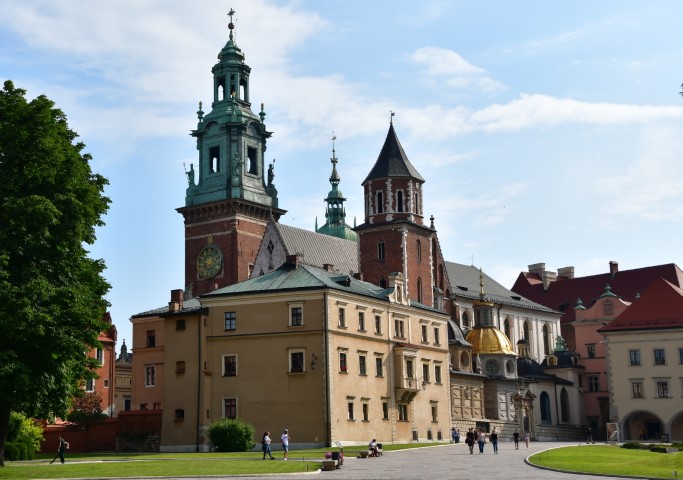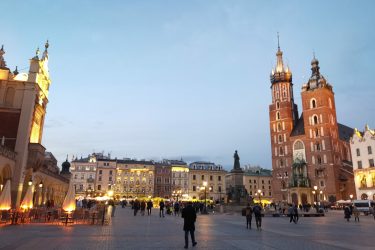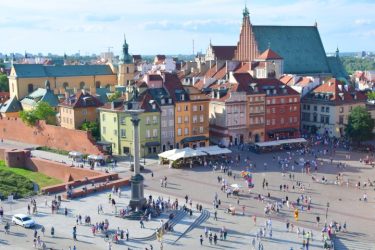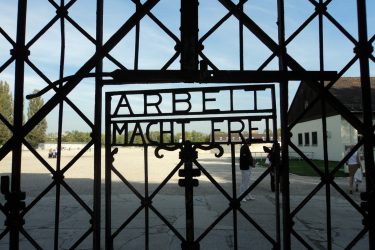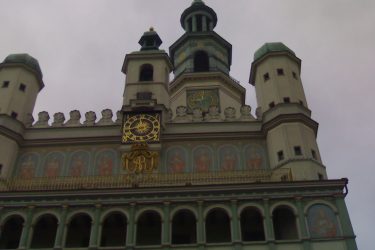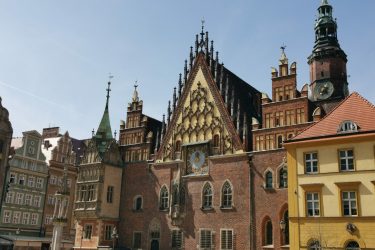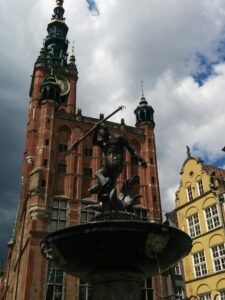Poland, a nation rich in culture, history, and scenic beauty, provides visitors with a wide range of things to do. Start your journey in Warsaw, the nation’s capital, where the beautifully restored Old Town—a UNESCO World Heritage site—beckons with its ancient buildings and cobblestone streets. Poland’s regal past is on display at Wilanów Palace and the Royal Castle.
Another cultural treasure is Kraków, which is home to the magnificent Wawel Castle and the ancient Main Market Square. To learn more about Poland’s wartime past, pay a visit to the moving Auschwitz-Birkenau Memorial and Museum, which is located close to Kraków.
Explore the historic Neptune Fountain while strolling through the mediaeval streets of Gdańsk, a port city with a long history in the maritime industry. Discover the charming city of Wrocław, which is renowned for its charming Market Square and its gnome-filled streets.
For those who love the outdoors, the Masurian Lakes offer a tranquil getaway and the Tatra Mountains offer fantastic hiking and skiing options. The European bison can be found in the UNESCO-listed Białowieża Forest, which also provides a rare look at unspoiled nature.
Savor traditional pastries, sausage and pierogi (dumplings) as you indulge in Polish food. Take in the lively cultural scene, visit the blooming galleries of modern art, and go to a concert of Chopin in Warsaw.
For all kinds of travelers, Poland’s dynamic combination of natural wonders, history, and culture provides an exciting and varied travel experience. In this article, we will give you the best things to do and see when you plan a visit to Poland.
Visit Krakow, Poland
A journey through centuries of history, art, and culture can be had by visiting Kraków, Poland. In the UNESCO-listed Old Town, where the magnificent Main Market Square unfurls with vibrant townhouses, the recognizable Cloth Hall, and the striking St. Mary’s Basilica, start your adventure. Scale the towers for sweeping city vistas.
Explore Kazimierz, the old Jewish Quarter, which is home to many synagogues, quaint squares, and a thriving artists community. Discover the Wawel Castle and Cathedral, where Polish rulers were buried and crowned, situated atop Wawel Hill.
Oskar Schindler’s Factory and the adjacent Podgórze area remember the tragic history of the Holocaust, offering a somber look back at Kraków’s wartime past. The Auschwitz-Birkenau Memorial and Museum, a sobering reminder of the Holocaust, is only a short drive from the city.
Explore Kraków’s culinary scene and enjoy traditional Polish cuisine in quaint cellar restaurants or busy markets to get a feeling of the local flavor. Take a leisurely boat trip on the Vistula River or unwind in the park that encircles the Old Town, Planty Park.
Kraków is a fascinating destination for tourists looking for an immersive experience in Poland’s cultural center because of its dynamic atmosphere, friendly residents, and the ideal balance of tradition and modernity, in addition to its ancient landmarks.
If you would like to know Must See Attractions when Visiting Krakow click here go to our post where you will receive the best information and some of our recommendations.
Visit Zakopane in the Tatra Mountains
Poland’s winter capital and gorgeous gem, Zakopane, is tucked away in the Tatra Mountains. This quaint town offers a great blend of outdoor experiences, cultural depth, and natural beauty. It is located in the southern portion of the country.
Zakopane, a city known for its distinctive wooden architecture, features classic highlander-style houses that are richly decorated with wood carvings. The main street in the town, Krupówki Street, is a lively center with many of colorful stores, quaint cafes, and stands selling local handicrafts. It’s a great spot to experience the ambiance of the area.
The Tatra National Park, a sanctuary for hikers and fans of winter sports, is accessible from Zakopane. Trekking, skiing, and snowboarding are made even more beautiful by the majestic peaks of the Tatra Mountains. A beautiful hiking track leads to the stunning alpine lake known as Morskie Oko, or Eye of the Sea.
The town also organizes the yearly International Festival of Mountain Folklore, which features vibrant folklore performances, traditional dances, and music honoring the rich culture of the highlanders. Discover Poland’s alpine wonderland at Zakopane, an enthralling place that invites those seeking outdoor experiences or a tranquil getaway amidst the mountains.
Visit Warsaw, Poland
Poland’s vibrant capital, Warsaw, is a city that skillfully combines a rich past with an exciting present. Warsaw, which is located on both banks of the Vistula River, has recovered from the devastation caused by World War II to become a robust city that is proud of its cultural legacy.
The Old Town, which painstakingly rebuilt following its destruction during World War II, is home to the Royal Castle and Sigismund’s Column. It is a UNESCO World Heritage site. There are many of eateries, colorful marketplaces, and entertaining street acts in the old Market Square.
One of the most recognizable buildings in the city, the Palace of Culture and Science, dominates the skyline. Warsaw’s modern attitude is most evident in areas like Praga, which is well-known for its graffiti and free-spirited vibe.
Deep insights into the complicated past of the city can be gained from museums like the Warsaw Uprising Museum and the POLIN Museum of the History of Polish Jews. Surrounded by magnificent gardens, the Wilanów Palace is a testimony to Warsaw’s imperial past while displaying royal luxury.
Warsaw is characterized by a vibrant nightlife, a strong culinary and artistic scene, and an underlying vitality. Visitors are encouraged to explore the nexus between Poland’s dynamic present and its historic past, as seen by the city’s resilience, which reflected in its rich architecture and cultural attractions.
Visit Auschwitz-Birkenau in Poland
Situated next to the Polish town of Oświęcim, Auschwitz-Birkenau is a menacing reminder of the horrors carried out during the Holocaust. The complex made up of Auschwitz II-Birkenau, an extermination camp used for mass killing, and Auschwitz I, the first concentration camp.
Originally, housing political prisoners, Auschwitz I later became a hub for organized killing. The eerie ruins of the barracks, the gas chambers, and the infamous “Arbeit Macht Frei” gate are visible to site visitors. The museum at Auschwitz I presents personal items, images, and moving testimonies of the victims in order to illustrate the atrocities that the captives had to undergo.
The purpose of Auschwitz II-Birkenau, with its enormous area and recognizable train ramp, was mass extermination. The remains of crematoria and gas chambers serve as somber memories of the unspeakable agony that occurred inside these walls.
Still functioning as a museum and monument, Auschwitz-Birkenau is an important and emotional place of pilgrimage. It provides a depressing look back at the darkest period in human history, paying tribute to the millions of people who died and emphasizing the need to remember and combat bigotry and hatred. A visit to Auschwitz-Birkenau is a deeply moving and important experience that strengthens the resolve to stop similar crimes in the future and encourages remembering.
Visit Poznan in Poland
One of Poland’s oldest and liveliest cities, Poznań, radiates a fascinating fusion of modernity, culture, and history. Poznań’s Old Town, which is located on the Warta River, is a mesmerizing collection of vibrant Renaissance buildings, quaint squares, and the famous Poznań Town Hall. The Old Market Square provides a charming setting for leisurely strolls with its majestic Basilica of St. Peter and Paul and its mediaeval row residences.
Poznań is well known for having a thriving cultural scene, with many festivals, concerts, and other events held there all year round. The lively and business-friendly climate of Poznań is reflected in the International Trade Fair, which takes place at the contemporary Poznań International Fair grounds.
One of the top intellectual institutions in Poland, Adam Mickiewicz University, adds to the vibrant and energetic atmosphere. The Collegium Maius of the university, with its magnificent architecture, gives the city a cerebral edge.
Surrounded by parks and recreational areas, Lake Malta provides a peaceful haven for anyone seeking a hint of nature. This city’s passion for water sports is demonstrated during the Malta International Dragon Boat Festival.
Warm hospitality, a bustling cultural scene, and the ideal balance of modern vitality and ancient elegance make Poznań an enjoyable destination for travelers looking for a rich and varied Polish experience.
Visit Wroclaw, Poland
Known as the “Venice of Poland,” Wrocław is a city characterized by its magnificent architecture, lively history, and charming canals. The Old Town of Wrocław, which lies tucked away on the Oder River, is a tapestry of vibrant Market Square, gothic cathedrals, and the famous Wrocław University architecture. The Town Hall’s elaborate details in Market Square and the charming dwarf statues strewn throughout the city enhance Wrocław’s distinct attractiveness.
The stunning Wrocław Cathedral may be reached along cobblestone streets on the old Ostrow Tumski, or Cathedral Island, in Wrocław. A picturesque view of the Oder River may be seen from the love-locked Tumski Bridge.
With the magnificent Tumski Bridge and the Grunwaldzki Bridge linking its many neighborhoods, Wrocław is known as the city of bridges. A monument to the cultural significance of the city and an architectural wonder, Centennial Hall is a UNESCO World Heritage site.
The Rynek Underground Museum and Wrocław’s varied architecture both showcase the city’s multicultural past and offer a window into its past. A large panoramic painting that takes viewers on a visual tour through Polish history is called the Panorama of Racławice.
Wrocław is a fascinating destination in the center of Poland, attracting visitors with its dynamic character and abundant green spaces, lively market squares, and lively cultural scene.
If you would like to know Top 5 Tourist Attractions in Wroclaw click here go to our post where you will receive the best information and some of our recommendations.
Visit Gdańsk, Poland
Polish Baltic coast treasure Gdańsk is a city rich in resilience, history, and lively cultural activity. Reconstructed with great care following World War II, the Old Town displays an impressive collection of Gothic and Renaissance architectural designs. The famous Crane, situated beside the Motława River, represents the maritime history of Gdańsk.
The center of the Old Town is the Long Market, or Długi Targ, which is home to the striking Neptune Fountain and a variety of colorful townhouses. The Artus Court and the mediaeval Gdańsk Crane enhance the city’s mediaeval charm.
The Gdańsk Shipyard, which is rich in historical value, is the cradle of the Solidarity movement. The European Solidarity Centre honors the efforts made to defeat communism and advance workers’ rights.
The streets of Gdańsk are a reflection of its cosmopolitan atmosphere, with influences from Gothic, Dutch, and Polish architecture coexisting. The city’s identity is deeply rooted in the amber trade, which is exhibited in the Amber Museum.
The Shakespeare Theatre, a stunning example of modern architecture, and St. Mary’s Church, the biggest brick church in the world, serve as examples of the city’s thriving cultural life. Explore Gdańsk’s maritime heritage, tenacious character, and dynamic fusion of modern energy and history along the Baltic shore.
If you would like to know Biggest Tourist Attractions in Gdansk click here go to our post where you will receive the best information and some of our recommendations.
Try Polish Cuisine
Starting a culinary adventure with Polish food is a pleasant way to discover complex flavors, filling dishes, and a blend of influences from both Eastern and Western Europe. Start your culinary journey with pierogi, the famous dumplings of Poland. Meat, potatoes, cheese, fruit, or any other savory or sweet filling can be placed inside these bread pockets.
Savor a meal of bigos, also referred to as “hunter’s stew,” a robust combination of meats, spices, and sauerkraut that has been a traditional Polish cuisine for centuries. Another delectable treat is Polish sausage, or kielbasa, which comes in an endless array of variants with varying meats, herbs and spices.
If you have a sweet taste, try some paczki, which are mouthwatering filled doughnuts that are particularly relished on Fat Thursday, or a slice of Szarlotka, a classic Polish apple pie.
Zurek, a tart rye soup flavored with sausage and hard-boiled eggs, provides a distinctive taste of Polish cuisine. Oscypek is a unique dessert from the Tatra Mountains that is a smoked sheep’s milk cheese.
Enjoy a cup of fragrant Polish tea or a shot of Żubrówka, a vodka laced with bison grass, to go with your meals. In addition to being a delicious experience, learning about Polish food is a cultural immersion that gives a glimpse of the country’s customs, heritage, and friendly hospitality.
Festivals in Poland
Poland’s festivals are an exuberant celebration of the country’s varied customs, rich cultural legacy, and thriving modern arts sector. In June, the Wianki Festival commemorates the summer solstice in Kraków and Warsaw through dance, music, and the symbolic releasing of flower wreaths into the Vistula River.
The Woodstock Festival Poland, one of the biggest outdoor music festivals in Europe, draws music lovers with its diverse line up and carefree vibe. It provides a venue for altruism and community involvement.
Poland’s favorite dumplings are honored at the Pierogi Festival in Kraków, where vendors provide a variety of inventive and conventional fillings. The Light Move Festival in Łódź completely changes the city with captivating light displays, multimedia acts, and projections.
The Chopin International Piano Competition in Warsaw is a prominent event that features outstanding pianists from all around the world for fans of classical music.
Before Lent, on Tłusty Czwartek, or Fat Thursday, people celebrate the colorful and vibrant Carnival season in Poland, when they indulge in traditional sweets. Dating back to the 13th century, Gdańsk’s St. Dominic’s Fair is a bustling market featuring crafts, music, and entertainment.
Poland’s festivals provide a plethora of experiences, whether honoring music, food, or centuries-old customs. Both locals and tourists are welcome to savor the nation’s rich cultural heritage and modern energy.





